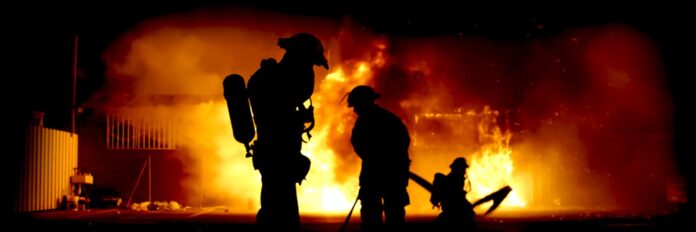A raging wildfire near Los Angeles has forced officials to declare a state of emergency as the fire rapidly expanded, threatening thousands of lives and properties. The fire, which erupted in the Pacific Palisades area, exploded from a mere 10 acres to more than 1,200 acres within hours, fanned by fierce winds and dry conditions.
Fire Chief Kristin Crowley confirmed that more than 30,000 people are now under evacuation orders, with 13,000 buildings threatened by the devastating flames. “We are facing one of the most intense fire outbreaks in recent memory,” she said. “Our teams are working tirelessly to control the situation, but the conditions are incredibly challenging.”
As the fire spread across the hillside, residents of the Pacific Palisades were forced to abandon their homes and cars, fleeing for safety as flames engulfed their properties. Footage from the area shows homes consumed by fire, with smoke billowing over the region. One resident, visibly shaken, shared with local news: “We grabbed what we could and ran. The fire was right on our heels.”
Los Angeles County Fire Chief Anthony Marrone stressed that the Pacific Palisades area remains “not out of danger,” despite efforts by firefighters to contain the blaze. “The winds are relentless, and we are not yet in the clear,” he warned.
The wildfire broke out around 10:30 AM local time on Tuesday, and in a matter of hours, it escalated with alarming speed. The National Weather Service (NWS) issued dire warnings about the fire conditions, calling them “life-threatening and destructive.” Wind gusts reaching up to 80 mph (128 km/h) fueled the rapid spread of the fire, turning what could have been a contained incident into an explosive disaster.
“Conditions right now are as bad as they can get in terms of fire weather,” said NWS spokesperson Christal Hayes. The region is under a red flag warning, indicating an extreme fire danger. Residents have been advised to stay alert and be prepared to evacuate at a moment’s notice.
The Santa Ana winds, notorious for their dry and intense nature, have played a pivotal role in this disaster. These winds, which sweep in from inland California, are known for their ability to dry out vegetation and create the perfect environment for wildfires to thrive. This year, the combination of these fierce winds and a prolonged drought has created conditions ideal for wildfires to grow uncontrollably.
The fire’s proximity to densely populated communities, including Malibu and Santa Monica, has escalated the urgency of the situation. The Pacific Palisades, located on the coast, is particularly vulnerable due to the steep terrain and the limited access roads, such as the Pacific Coast Highway, which is the primary evacuation route.
“We’re seeing explosive wildfire behavior,” Los Angeles Fire Department Captain Erik Scott told local station KCAL-TV. “The winds are knocking down trees, and power lines are coming down, making it even more dangerous.” The power outages caused by downed wires have compounded the difficulty in controlling the fire.
Firefighters have been working around the clock, with additional resources brought in to battle the blaze. California Governor Gavin Newsom’s office dispatched 45 more fire engines and five helicopters to support local fire crews. Water bombers have been seen collecting water from the Pacific Ocean to help contain the flames, but the fire continues to outpace efforts to control it.
In the early hours of the fire’s outbreak, officials were able to contain the flames to a 20-acre area. However, within minutes, the fire’s growth was explosive. “In just 20 minutes, the fire grew from 20 acres to 200 acres, and then from 200 acres to over 1,200 acres by the afternoon,” Marrone said. “This is a rapidly evolving situation, and every minute counts.”
The Pacific Palisades area, which includes a mix of residential properties and parkland, has long been at risk for wildfires due to its dry climate and proximity to mountainous terrain. In fact, experts have long warned that Southern California’s wildfire season is becoming more unpredictable and dangerous due to climate change.
As the fire continues to burn out of control, officials are also dealing with the massive logistical challenge of evacuating residents and coordinating emergency response efforts. “Evacuating such a large number of people in a short amount of time is incredibly difficult,” Crowley explained. “Our teams are doing everything they can, but the conditions are intense, and we are prioritizing lives first.”
Thousands of residents have been forced to seek shelter in evacuation centers, but the scale of the disaster is overwhelming. With thousands of homes and buildings in jeopardy, the full extent of the destruction may not be clear for days. For now, the focus remains on containing the fire and preventing further loss of life and property.
“This is the kind of disaster we all hope never happens, but here we are,” said one local firefighter, standing outside a home that had been reduced to ashes. “We’re going to keep fighting. That’s what we do.”

